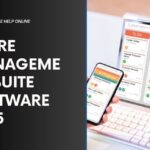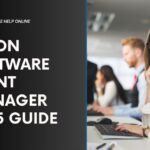The term Business IT Asset Management refers to the effective and economic management of an organization alongside, its software assets such as software licenses and applications. With operations ranging from software development to certified software asset managers, the role of an organization as a whole has grown multifold.
In this article, I’ll explain the process of Business IT Asset Management along with its potential benefits and functions. Let’s dive in!
Table of Contents
What Is Business IT Asset Management?
Business IT Asset Management is the practice through which the IT assets of an organization are accounted for throughout their life-cycle, from purchasing or acquiring, through utilization and eventual disposal.
Business IT Asset Management essentially enables an organization to establish and enforce policies and strategies that mitigate risk and maximize utilization within its software architecture.
The primary role of Business IT Asset Management is to ensure control over, and limit the number of IT resources running and being used outside the organization’s authorized sprawl.
Don’t miss: Element Management System Software: Complete Guide 2024
To limit the negative impact on software licensing and overall IT expenditure, additional responsibilities are included.
How Business IT Asset Management can be Reduced?
The practice of Business IT Asset Management needs to be implemented as federated within an organization, rather than being solely centralized or decentralized, to enact business-level practices accurately.
The overall framework of Business IT Asset Management allows for the adoption of a wide range of strategies.
1. Software Assets Tracking
– Prepare a complete record of all software applications present in the organization.
– Make sure that software versions are upgraded and licenses that are not in use are disabled.
2. License Compliance
– Confirm that the company adheres to rules regarding software licensing.
– Be ready for the audits that some software vendors normally do and avoid contravention of their policies.
3. Cost Optimization
– Determine which software is not in use or underused such that expensive licenses are not incurred in purchasing the software.
– Schedule for the renewals of The licenses and bargain for lower prices with the providers.
4. Vendor Management
– Liaise with various software vendors so that reasonable contracts may be drawn.
– Follow up the agreements on vendor contracts for their expiry dates and amendments to terms.
5. Audit Preparation and Management
– Take the necessary steps to ready the company for vendor audits which are by nature unpredictable.
– Make sure that all documents and written reports that demonstrate compliance are available.
Why Is CSAM Certification Important?
A good number of companies experience difficulties in the management of software leading to compliance risk and loss of money on some management tools. A CSAM professional ensures that:
– The organization does not encounter legal problems as a result of a breach of licensing of software.
– Software expenditures are reduced and efficiently managed.
– Regular streams of audits from vendors like Microsoft and Adobe lead to no fines.
– The organization maximally benefits from the investments in software.
Don’t miss: 8 Best Engineering Change Management Software System Tools.
The fact that CSAM certification also assists organizations in refining their asset management makes it a great benefit for IT personnel as well as businesses.
How do you become CSAM certified?
1. Register for a Training Program
IAITAM provides on-site and online training programs that are designed to corral you into everything regarding software asset management.
2. Finish the Course
The training includes vital aspects of management such as software lifecycle management, compliance, vendor relations, and audits. You will also be imparted effective use of software asset management tools.
3. Score a Pass in the Certification Exam
You have to complete the CSAM exam after you have finished the course. It is a multiple-choice examination assessing the skills acquired by candidates in software asset management.
4. Re-certify Please!
Because the rules and policies about software and licensing change so frequently, IAITAM requires ongoing education or other certifications to renew the CSAM certification.
Who can obtain a CSAM Certification?
For the ones looking to certify themselves under CSAM certifications, it is highly recommended because;
– IT Professionals controlling software in an organization.
– Procurement Specialists overseeing the purchase of software licenses.
– Compliance Officers responsible for licensing exercise.
– Asset Managers tasked with effective management of IT assets.
– Projects Managers who handle software projects.
What Are the Advantages of Having a CSAM Certification?
There are several potential benefits associated with becoming certified as a software asset manager:
1. Employment Opportunities and Professional Advancement
Due to the global need for compliance and cost efficiencies, job prospects for certified software asset managers remain promising. An additional bonus is that with a CSAM Certified, one enjoys a competitive advantage when seeking employment opportunities anytime in the future.
2. Increased Earnings
Research shows that IT professionals with CSAM accreditation tend to get paid more as compared to their unaccredited counterparts.
3. Increase in Software Contracting Effective Approaches
CSAM training equips you with skills on the best ways to negotiate software contracts thus getting your organization the best bargains.
4. Decreased Likelihood of Audit Penalties
Learning proper procedures for software license management would shield you from audit penalties. A lot of companies incur hefty fines simply because they do not monitor their software usage properly.
5. Lower Software Acquisition Costs
CSAM professionals can identify unused software and strategically control license usage to save organizations on software costs.
What Are the Ranges in Terms of Fees for CSAM Certification?
There can be some differences in the costs of CSAM certification from one region to another also when the instructor is online or the training is face-to-face. In most cases, the overall cost can be broken down into the following categories:
– Training Fee: Approximately $1500–$2000 (depending on trainer and area).
– Examination Fee: Not applicable as it is usually part of the training fee.
Don’t miss 8 Best Dental Laboratory Management Software Tools.
In some cases, companies cover the certification expenses for their employees, so do not forget to ask your employer if there are any refund schemes available.
Career Opportunities for Certified Software Asset Managers
Since more companies are depending on software, professional software asset managers are in increasing demand. Individual roles for CSAM professionals include the following:
– Software Asset Manager
– IT Asset Manager
– Compliance Manager
– Procurement Specialist
– IT Auditor
Don’t miss: What is EMV Software | 5 Best EMV Software For 2024
However, specific industries such as IT services, healthcare, finance, and manufacturing are more importantly looking for experts in the area of software asset management.
Best Practices for Software Asset Management (SAM)
For those who would like to begin with the CSAM certification as well as for those who are already managing the software – best practices will assist you in keeping up with the times:
1. Use SAM Tools: Use Flexera, Snow Software, ServiceNow, and other tools to automatically track assets and monitor for license compliance.
2. Perform a Compliance Audit: Do not wait to be audited by vendors, be proactive, and develop a habit of performing internal compliance audits periodically.
3. Understand Software Use: Identify underutilized software and eliminate unnecessary licenses.
4. Manage Software Changes: Update information on the changes released by a vendor, new versions of software, and rules of licensing.
Conclusion
In IT, procurement, or compliance management, a professional with the certified software asset manager (CSAM) certification is sure to advance further. With this certification, you develop skills that enable effective management of software licenses, cost-cutting, and license agreement compliance. Having CSAM onboard Lowers the risk of non-compliance and enhances the efficiency and control of software asset management. Hence, individuals seeking career growth and companies seeking to manage software effectively must have this CSAM certification.





